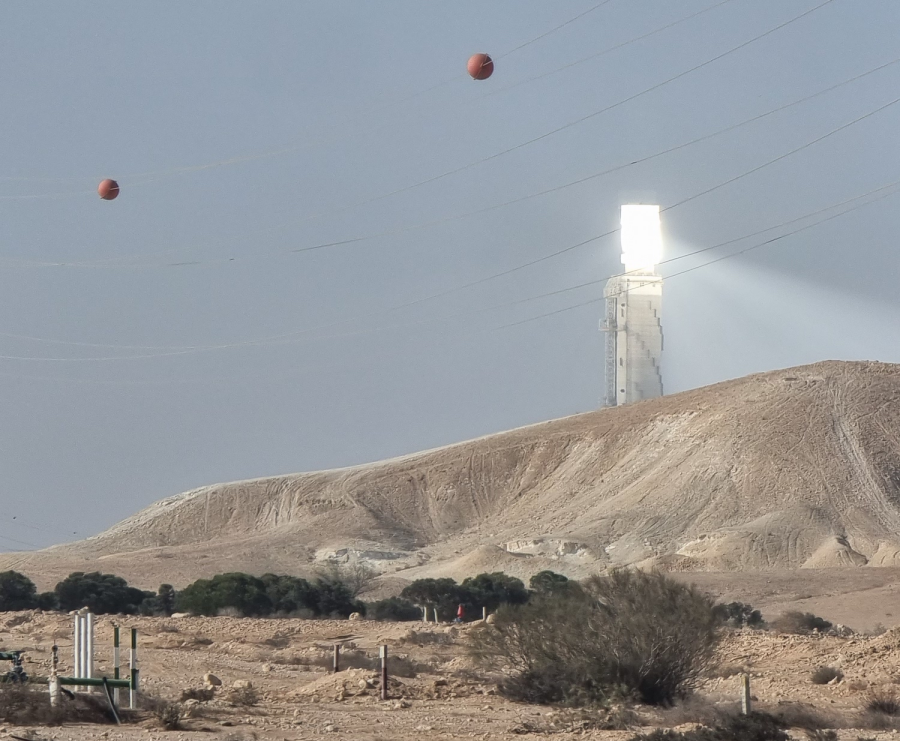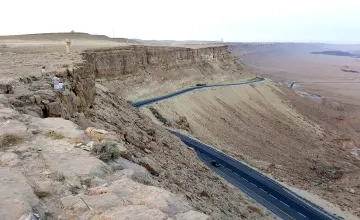Get to know Tel Arad National Park
Canaanite water plant from the early bronze ages Remains of early bronze era fortifications A citadel from the iron age with a unique temple
Overnight parking -the Canaanite Khan:
Flowering concentration of brown iris and loess soil vegetation.
At the beginning of Canaan's urbanization period, Canaanite Arad was already a planned city. It is surrounded by a wall and is divided into residential and public buildings. Arad was an urban center for the residents of the area. The richness of the findings found in the excavations shows a variety of economic branches such as husbandry, grazing, art and commerce. Arad was a well-developed place. Here are some of the main sites:
The water reservoir:
The houses in the city were built in such a way that the rainwater that trickled down the slope was collected in a reservoir surrounded by buildings on three sides. A 16 m deep well was dug in the center of the reservoir, probably in the early Israeli period. The east of the reservoir remains open, where the dam was built to stop the runoff.
The fortifications:
In addition to its 1,200 m long and 2.4 m thick walls, Arad the Canaanite was surrounded by a strong wall. Originally, the wall was five meters high. It was covered in bugs, had towers protruding from it, and followed the watershed of the hill. It is known today that there was only one gate in the wall, but it is possible that there were more.
The residences:
There was a uniform style of building houses in Arad known as the Aradi house. It was built with stone benches along the walls, and the floor was lower than the street level, so one or more steps were necessary to enter it. It is a transverse stone structure whose floor was lower than the street level. A wooden pole was placed in the center of each hall to support a flat roof on a stone base. On the side of the central hall there were sometimes a side room or two, which were probably used as a storeroom and a kitchen. Only the foundations of the walls survived from the Arad houses, and a small clay model of a house discovered in the excavations helps to complete the picture. The model is on display at the Israel Museum in Jerusalem.
The "palace":
Its location between the western city gate and the water reservoir suggests it served as a governmental complex with many rooms, cells, and courtyards. Its center contains important finds, including a ritual stele.
The temples:
Two large temples, two small temples, and a single temple were found near the palace, surrounded by a stone fence. Similar temples were found in Ein Gedi (Chalcolithic period) and Megiddo (Early Bronze Age). Similar to Bet Aradi, the temples have wide rooms with courtyards. The temples are surrounded by stone tombstones, platforms for sacrificing animals, and ritual basins. There may be several gods worshiped by the multiplicity of temples.
Citadel Hill
As a link in the fortress system of Judah, the citadel on the site is a fortified structure (50x55 m). Arad was home to 6 citadels during the royal period, this one on top of the previous one. It was discovered that the citadel had a unique temple and a unique water plant. The Nature and Parks Authority restored and conserved the temple and prepared a path to the water plant for visitors.
The temple:
There were traces of a Jewish temple in the northwestern corner of the citadel, which operated during the same period as the temple in Jerusalem, from the 9th century to the end of the 8th century BC. In addition to being one of the few temples from the biblical period, Arad's temple was designed in accordance with the Tabernacle plan, and it had an inner courtyard, a hall, and a sanctuary - the Holy of Holies. A square altar in the courtyard is composed of dirt mixed with small stones, surrounded by field stones (unhewn stones). According to the biblical commandment, this altar does not contain stones that were hewn with metal tools. There are three steps to the Devir, which is located west of the courtyard. There are two altars of incense at the entrance to Devir, and a tombstone is inside. An ostrakon (pottery with inscriptions) was found near the temple that listed the names of priestly families mentioned in the Scriptures (Mermot, Ezra 8:33, and Pashhur, Jeremiah 6:1). It appears that the temple was abandoned in the 8th century BC. As the citadel continued to serve its purpose, it was completely covered in dirt. A possible explanation is the religious reform of King Hezekiah and Yeshua, who centralized worship in Jerusalem by abolishing worship in the cities of the field. At the same time, Tel Bar's altar was also dismantled seven times.
The water plant:
Near the temple are three carved and plastered spaces accessible by a channel cut into the rock. Part of the staircase leading to them has been preserved. The spaces are impressive. They are accessible through a channel cut into the western wall. Near Beit Elyashiv's southern wall, a cache of ostracos, most of which are written in ancient Hebrew script, has been found. The house contained 17 ostracones addressed to a man named Eliashiv, probably the commander of Tel Arad's citadel. Three seals bearing his name were also found there.
Overnight parking - The Canaanite Khan :
There are six accommodation pavilions, a private tent area, and a caravan area on the parking lot for the Hellenes, as well as a closed building with mattresses and heating. Among the amenities in the parking lot are drinking water, toilets, hot showers, a cooking area, outdoor lighting, and electricity outlets.









